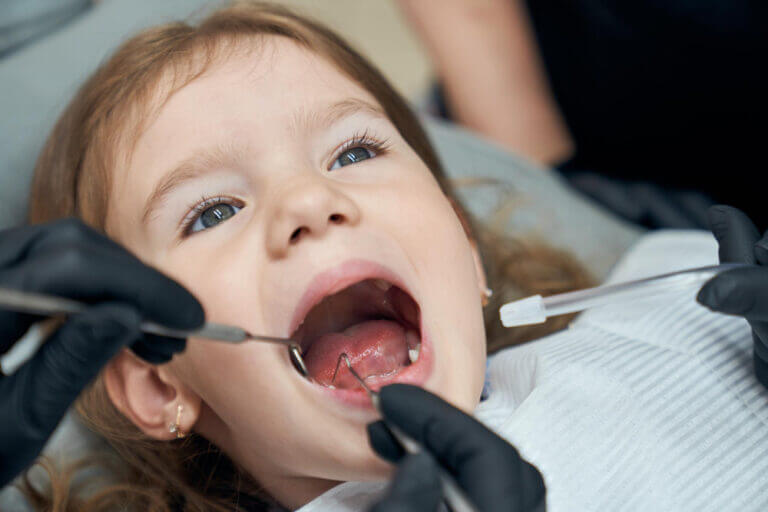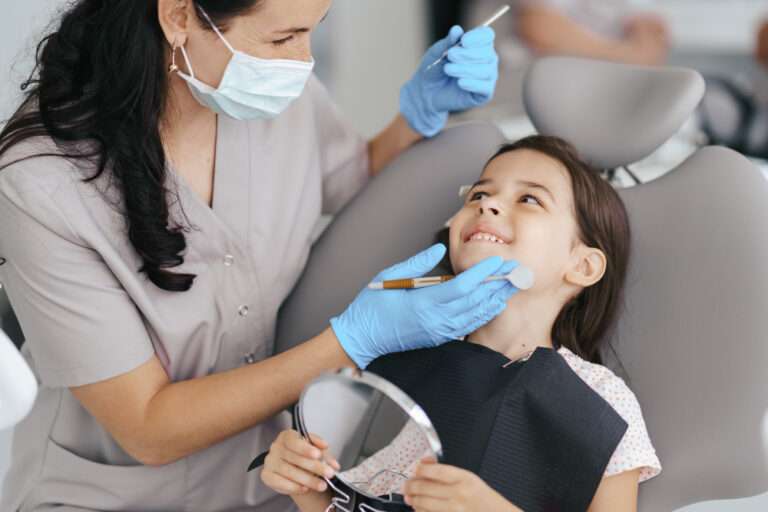Malocclusion in children
Malocclusion refers to the misalignment or incorrect positioning of teeth when the jaws are closed. It is a relatively common dental issue in children and can vary in severity from mild to severe. Malocclusion can affect a child’s oral health, appearance, and even their ability to chew and speak properly. Here are key points about malocclusion in children:
- Types of Malocclusion:
- Malocclusion can manifest in different ways, including:
- Overbite: The upper front teeth overlap the lower front teeth excessively.
- Underbite: The lower front teeth protrude in front of the upper front teeth.
- Crossbite: Some of the upper teeth sit inside the lower teeth when the jaws are closed.
- Open bite: There is a gap between the upper and lower front teeth when the jaws are closed.
- Crowding: Insufficient space in the jaw leads to teeth bunching or overlapping.
- Spacing: Gaps or spaces exist between teeth due to excessive jaw space.
- Malocclusion can manifest in different ways, including:
- Causes:
- Malocclusion in children can result from a combination of genetic factors and environmental influences.
- Habits such as thumb-sucking, prolonged use of pacifiers, and tongue thrusting can contribute to malocclusion.
- Early loss of primary (baby) teeth or trauma to the mouth can also affect the development of permanent teeth and lead to misalignment.
- Signs and Symptoms:
- Signs of malocclusion in children may include:
- Difficulty biting or chewing properly.
- Speech difficulties, such as lisping.
- Discomfort or pain in the jaw or teeth.
- Self-esteem issues related to the appearance of their teeth.
- Premature wear of teeth due to misalignment.
- Signs of malocclusion in children may include:
- Diagnosis:
- A pediatric dentist or orthodontist can diagnose malocclusion through a comprehensive dental examination, which may include dental X-rays and impressions of the teeth.
- Early detection is crucial for determining the appropriate treatment.
- Treatment:
- The treatment for malocclusion in children depends on the type and severity of the misalignment. Common treatment options include:
- Orthodontic braces: These are used to gradually shift teeth into their correct positions.
- Orthodontic appliances: Some children may require additional devices, such as headgear or palate expanders, to correct jaw or bite issues.
- Retainers: These are often used after braces to maintain the corrected alignment.
- Surgical intervention: In severe cases, surgery may be necessary to correct jaw misalignment.
- The treatment for malocclusion in children depends on the type and severity of the misalignment. Common treatment options include:
- Timing of Treatment:
- Orthodontic treatment for malocclusion is often most effective during childhood and adolescence when the jaw is still developing.
- Early intervention may prevent the need for more extensive treatment later in life.
- Prognosis:
- With appropriate treatment, many cases of malocclusion in children can be corrected, improving oral function, aesthetics, and overall oral health.
- Regular follow-up appointments with a dentist or orthodontist are essential to monitor progress and ensure long-term results.
Parents and caregivers should pay attention to their child’s dental development and seek guidance from a dental professional if they suspect malocclusion. Early intervention and orthodontic treatment, when necessary, can help ensure a child’s oral health and well-being.
------------From our Sponsors------------









